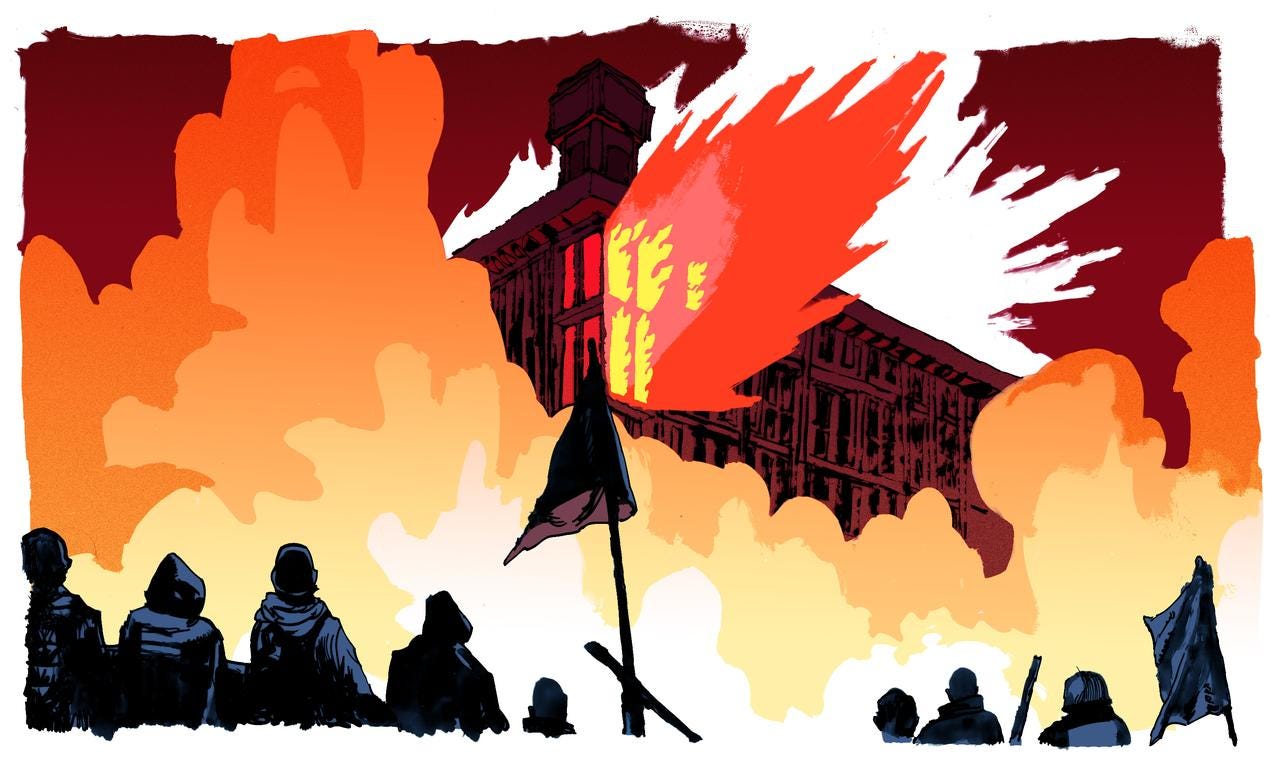The Drab Ukrainian Office Block That Birthed a Revolution
Two years ago today, the headquarters of Ukraine’s uprising went up in flames while protestors were shot in the streets.

Illustration by Matt Rota
Blue skies and a sharp light marked the morning of February 18, 2014. It was Kiev’s first sunny day in a month defined by snow, grey cloud cover and bloody sidewalks.
For three months, Ukrainian protestors were battered by police batons, rubber bullets, real bullets, and the biting Ukrainian winter wind in a series of anti-government protests that came to be known as Euromaidan — for the Kiev square where it began — or the Revolution of Dignity. On that sunny morning, the protestors thought they had won the standoff; February 18th was supposed to be the day that Parliament signed a series of laws promising constitutional change, early elections, and amnesty for the protestors, then considered outlaws.
“We marched to Parliament to tell them that ‘we did our part, now do yours,’” says now-nineteen-year-old Sviatoslav Yurash, former head of Euromaidan’s press center.
Keep reading with a 7-day free trial
Subscribe to Narratively to keep reading this post and get 7 days of free access to the full post archives.


